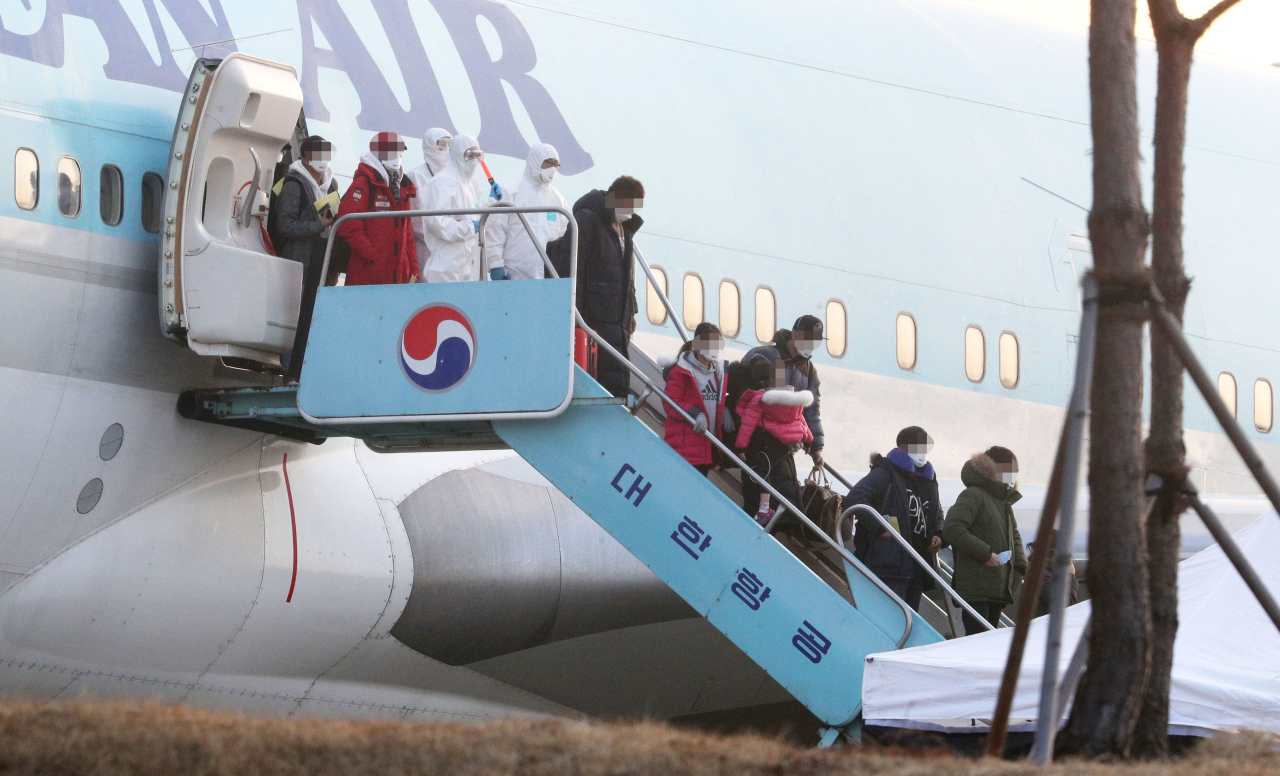After the government flew the first chartered flight using Korean Air’s B747 to Wuhan and brought 368 South Koreans here on Friday morning, the future use of the plane has come under public scrutiny, despite assurances by doctors about very low possibility of getting infected.
According to the real-time air traffic tracker Flight Radar 24, Korean Air’s 22-year-old B747 which has tail number HL7461 was used to evacuate Koreans based in Wuhan, the epicenter of the coronavirus outbreak. The plane used to be operated on the Incheon-Bali route, one of the air carrier’s most popular routes.
“Although the company says it sterilizes the interior of the plane, I would not use the flight used to evacuate people from Wuhan. There should not be any kind of hatred toward people who flew from Wuhan, but I personally feel uncomfortable and anxious over taking the same flight that they used,” a 30-something office worker told The Korea Herald on condition of anonymity.
Others also said although they can imagine “how thoroughly the workers will sterilize the plane,” they still “feel uneasy” to use the same plane. Some even said they would have changed the reservation if they had known about the flight details in advance.
According to Korean Air, after B747 landed at Gimpo International Airport with the evacuated passengers, it went through a three hour-long sterilization process which involves spraying chemicals using MD-125 sterilizer on hard surfaces such as tray table and seat arm. MD-125 sterilizer’s disinfection effect is known to last for seven days.
All soft surfaces, such as seat covers, have been also completely changed with new one, while cabin air filtration system has been changed to a new high-efficiency particulate air or HEPA filter, it added.
According to medical experts, it is close to zero possibility for a new coronavirus to spread inside a flying plane.
Lee Jae-gap, professor of infectious disease unit from Gangnam Sungshim Hospital said in a recent interview with a local media that there is “very low possibility” of infectious disease spreading inside the plane, especially when the air circulation system is activated.
Based on Korean Air’s air filtration system on the plane, the air conditioner activates from the moment it takes off till landing, which is similar to the air circulation system used at hospitals.
When a plane cruises at above 9,000 meters, the outside temperature of the plane drops below 50 degrees Celsius. By warming the air outside the plane, the system puts fresh air into the cabin, which goes through the engine compressor.
At this stage, the air is heated up to 200 degrees Celsius, which once again goes through a sterilization process through ozone filtration system and is moved to air conditioner pack, to be put into the cabin every two to three minutes. It is then mixed with interior air that was filtrated via HEPA filter. HEPA filter is known to filter 99.9 percent of viruses in the air.
A Korean Air official told The Korea Herald that “fresh air is provided to the cabin constantly during the flight, which makes it impossible to get infected inside the plane.”
Meanwhile, Hanjin Group chairman’s decision to accompany the chartered flight to Wuhan drew public criticism, with some even accusing him of a publicity stunt prior to the company’s shareholders meeting in March.
Cho himself said in an interview with reporters at Incheon International Airport on Thursday before the departure that he decided to join his employees who volunteered to service Koreans leaving Wuhan, as well as to show his support for them.
News reports have said tens of flight attendants, many of whom hold executive positions in the company’s labor union, volunteered to work on the flight to lend help in the emergency situation.
“I will try my best to be not a disturbance to anyone (inside the plane),” he told reporters, adding that he has also told the country’s Health Minister Park Neung-hu that he would respond to the country’s call anytime.
But some public criticisms toward Cho said that he is just making his employees uncomfortable, trying hard to focus on the service.
Unlike South Koreans moved out from Wuhan, Chairman Cho and Korean Air flight attendants do not require two week-long isolations, as they have onboard the flight by wearing dust-free suit.
By Kim Da-sol (
ddd@heraldcorp.com)








![[Weekender] Korea's traditional sauce culture gains global recognition](http://res.heraldm.com/phpwas/restmb_idxmake.php?idx=644&simg=/content/image/2024/11/21/20241121050153_0.jpg)